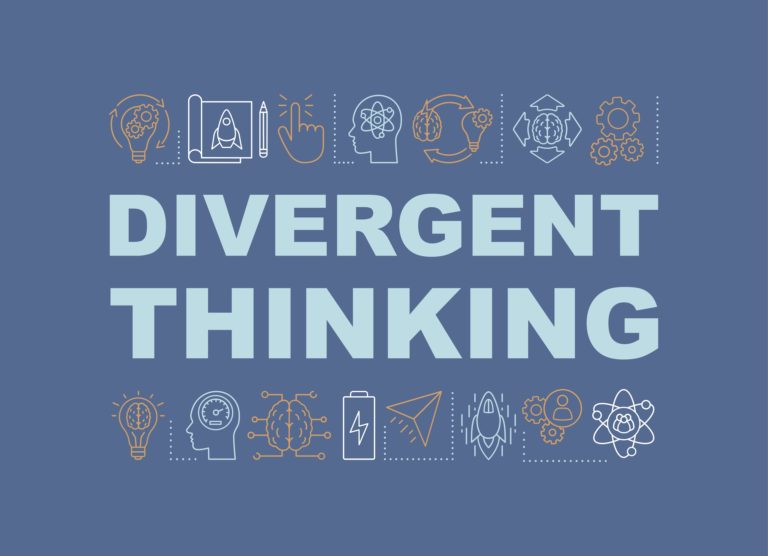What is Divergent Thinking?
When you hear the term divergent thinking, you might have a flashback to the book (also a popular movie) Divergent, in which some of the unique characters in this story are “divergent” or different. Divergent simply means being able to think outside the box as opposed to convergent thinking, which means to restrict ideas to ones that might be the only correct answer. Divergent thinking opens students up to the idea that there can be more than one way to solve a problem. As education evolves, instruction tends to promote more divergent thinking than it has in the past.
Benefits of Divergent Thinking
Divergent thinking has many benefits. Once upon a time, convergent thinking was encouraged. There was one solution and one way to arrive at that solution. Now, creative thinking is encouraged in the classroom and in the real world. Students need to be prepared to be flexible and think outside of the box. Divergent thinking allows students to make connections between ideas and to find innovative ways to view problems. When students can think divergently, they are able to find solutions to problems in unexpected ways.
Additionally, divergent thinking allows students to work together to generate new ideas. This encourages collaboration and prepares students for working with others when they enter into a college and/or career setting. When students practice collaboration, they are practicing the idea of pushing the boundaries of their schema and imagination.
Not only does divergent thinking inspire students to think outside the box and to collaborate, it also gives students a sense of excitement and interest regarding subject matter. If students are allowed to approach curriculum with the mindset that they are encouraged to solve a problem in a way that works for them, they are more likely to be motivated to put their best effort into action.
Teaching Strategies to Promote Divergent Thinking
Educators can incorporate divergent thinking in a variety of ways. The following strategies are ways to incorporate divergent thinking into daily classroom activities.
- Encourage Students to Embrace Creativity– By allowing students to have time to free write, use various materials to create products, and invent new games, educators are encouraging students to think differently. Some educators may even limit the amount of resources or time allotted during these creative activities in order to push students to think divergently.
- Ask Divergent Questions– Teachers are often guiding student learning by asking appropriate questions. Divergent questions involve real world situations that ask students to solve a problem that has multiple solutions. com provides a list of examples of divergent thinking questions as compared to convergent thinking questions.
- Brainstorming– Brainstorming is a strategy that has long been present in instruction. It involves generating a list of ideas, as many as possible in a short period of time. Brainstorming allows students to record all ideas and disregard none. This leaves the field of options open and encourages students to explore a variety of ways to approach problems.
- Foster a Creative Environment– As educators, it’s important to set the tone of the classroom. This can be done by encouraging students to think critically and creatively and by modelling divergent thinking. Allow students to share their ideas with each other so that they can gain a better understanding of others’ perspectives and thought processes.
- Use Inquiry-based Learning– Using inquiry-based learning asks students to formulate questions, research answers, share knowledge, and reflect on their learning process. In inquiry-based learning, students are given autonomy to decide on questions about the topic they want to explore. This allows students to use open-ended questions to direct their own learning and make connections to deepen their understanding of subject matter.
- Give Students Access to Unconventional Learning Materials– Every teacher needs solid lesson plans as a staple in their teacher tool kit; however, introducing additional unconventional learning materials will help students think creatively and engage deeply in lessons. These materials might include, but are not limited to: using QR codes, collaborating using Google Slideshows and Google Classroom, allowing students to listen to educational podcasts, inviting guest speakers into the classroom, and involving community members in lessons.
While creativity isn’t something that can be taught step-by-step, it is a way of thinking that can be applied to classroom tasks on a daily basis. This way of thinking can then be carried over into students’ lives and futures. Engaging students in divergent thinking is stimulating, exciting, and a surefire way to allow students to engage with subject matter in a fun and creative way.




